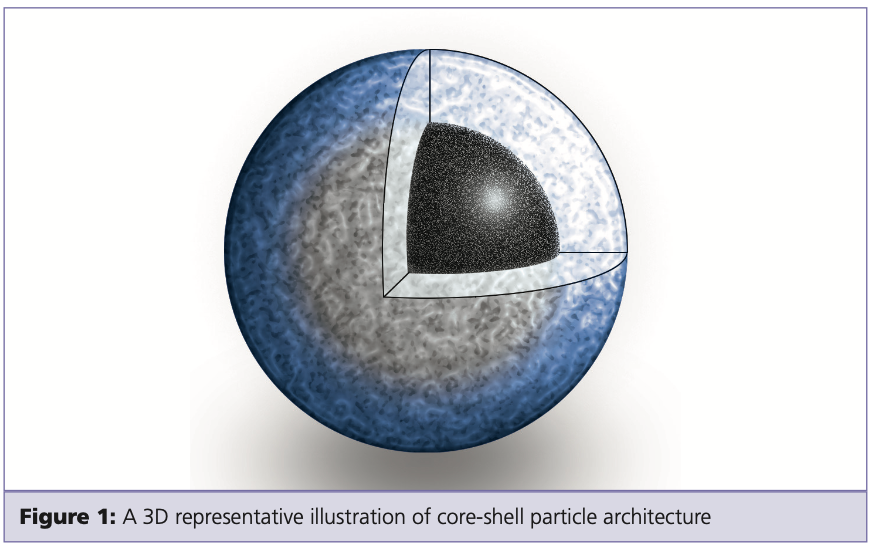Tips for Maximizing the Performance of Core-Shell Columns
A key advantage of core-shell (also called superficially porous, SPP) columns, such as Ascentis® Express or BIOshellTM, is that their performance can rival that of the traditional fully porous particle columns, but at somewhat larger particle sizes and at significantly lower backpressures. Therefore, core-shell columns can often be used on conventional HPLC instruments, while providing performance similar to ≤2 μm totally porous particle columns.
The extent to which a column’s optimum performance can be achieved is limited by the relative magnitude of system dispersion (instrument bandwidth), which can be qualitatively approximated by the system extracolumn volume (also known as system dead volume). However, it is not the absolute system extra-column itself, but the magnitude of the system extracolumn volume relative to the column volume that is key. A larger system extracolumn volume means that the analyte peak (or band) has greater time and volume to diffuse and thus become more diluted, resulting to a broader analyte peak. Therefore, reducing the system extra column volume will virtually always result in improved measured column performance.

To achieve the optimum performance of core-shell columns, consider the following steps to reduce extra column volume:
1. Minimize column inlet (injector to column) and outlet (column to detector) tubing lengths. Minimizing the tubing lengths will reduce the system extracolumn volume will virtually always result in improved measured column performance.
2. Column inlet and outlet tubing ID should be a maximum of 0.005” (0.125 mm). Using smaller ID tubing is most often beneficial, but be aware that backpressure will increase as a function of the square of the ID. Therefore, for applications that are not particularly high flow, going to 0.004” ID can be a good compromise between performance and backpressure.
3. For detectors that utilize a flow cell, keep the flow cell volume to ≤5 μL, and preferably to ≤3 μL. Larger flow cells can cause extra-column dispersion, which results in an apparent decrease in column efficiency.
There are also instrumental considerations related to the detector that can be optimized to help achieve optimum core-shell column performance.
1. Make sure your sampling rate is high enough. You should be recording at least 10 points across the narrowest peak. Doing >20 points across a peak is excessive and only creates a larger file size. Also, the higher the sampling rate, the higher the noise.
2. Most optical detectors (UV, DAD, fluorescence) include a parameter often referred to “response time” (or something similar). A recommended setting is 0.1 s. A faster sampling rate is generally not necessary and only creates more noise.
All else being equal, optimum column performance will be achieved with larger columns. Use of smaller columns has its advantages but realized performance will be compromised. For many HPLC systems in which the configuration has been optimized as previously described, a 3 mm ID column is often a good compromise between the advantages of a small column, such as shorter run time and less consumption of mobile phase, and of realized performance.
As for gradient methods, be aware that a high-pressure mixing system will generally permit additional control of the retention behavior of early-eluting peaks and, therefore, can also allow for shorter run times.
Explore our HPLC columns—visit our website: sigmaaldrich.com/hplc

Influence of Concentration in Conventional GPC/SEC and Advanced Detection GPC/SEC
March 21st 2025Sample concentration is a parameter that can influence the quality of gel permeation chromatography/size-exclusion chromatography (GPC/SEC) separations and the obtained results. Understanding this influence can help to support the development of reliable GPC/SEC methods.
